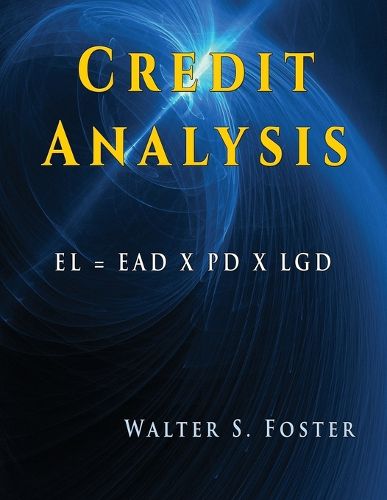Readings Newsletter
Become a Readings Member to make your shopping experience even easier.
Sign in or sign up for free!
You’re not far away from qualifying for FREE standard shipping within Australia
You’ve qualified for FREE standard shipping within Australia
The cart is loading…






This title is printed to order. This book may have been self-published. If so, we cannot guarantee the quality of the content. In the main most books will have gone through the editing process however some may not. We therefore suggest that you be aware of this before ordering this book. If in doubt check either the author or publisher’s details as we are unable to accept any returns unless they are faulty. Please contact us if you have any questions.
In credit analysis, we have three levels of certainty - facts we can know beyond all doubt, decisions we can make beyond a reasonable doubt and decisions we can make based upon the preponderance of evidence. For example, in legal analysis for civil cases, we only need to demonstrate our case by a preponderance of evidence. In legal analysis for criminal cases, we need to demonstrate our case beyond a reasonable doubt. In scientific proofs, we need to demonstrate our case beyond all doubt. In credit analysis some things we know beyond all doubt - for example accounting rules; some things we know beyond a reasonable doubt - for example financial statement analysis, and cash flow analysis; and finally some things we only know based upon the preponderance of evidence – for example credit analysis and credit understanding. Credit analysis is an art not a science, it comes up with probabilities for decision making under conditions of uncertainty.
This book clarifies this art from four perspectives - the perspective of the rating agencies, the perspective of the regulators, the perspective of the individual bank and the perspective of the derivative risk manager.
Rating agencies primarily attempt to evaluate the probability of default for individual bonds. There clients are investors who need help in evaluating the credit risk of their investors. Rating agencies evaluate of the business risk and financial risk of individual companies. Regulators primarily attempt to protect depositors from the default of the banking system. Their client is the US government which needs help in managing inflation and unemployment.
Regulators evaluate the default risk of individual banks. Banks primarily attempt to evaluate the probability of loss for a portfolio of loans and financial activities. Their client is their shareholders who are looking for a return on their investment from dividends and appreciation in stock price.
Banks attempt to evaluate the probability of default of their own bank. Derivative Risk Mangers primarily attempt to evaluate the probability of loss for their trading activities. Their client is the bank or investment bank senior management who are looking for a way to reduce their volatility of earnings.
$9.00 standard shipping within Australia
FREE standard shipping within Australia for orders over $100.00
Express & International shipping calculated at checkout
This title is printed to order. This book may have been self-published. If so, we cannot guarantee the quality of the content. In the main most books will have gone through the editing process however some may not. We therefore suggest that you be aware of this before ordering this book. If in doubt check either the author or publisher’s details as we are unable to accept any returns unless they are faulty. Please contact us if you have any questions.
In credit analysis, we have three levels of certainty - facts we can know beyond all doubt, decisions we can make beyond a reasonable doubt and decisions we can make based upon the preponderance of evidence. For example, in legal analysis for civil cases, we only need to demonstrate our case by a preponderance of evidence. In legal analysis for criminal cases, we need to demonstrate our case beyond a reasonable doubt. In scientific proofs, we need to demonstrate our case beyond all doubt. In credit analysis some things we know beyond all doubt - for example accounting rules; some things we know beyond a reasonable doubt - for example financial statement analysis, and cash flow analysis; and finally some things we only know based upon the preponderance of evidence – for example credit analysis and credit understanding. Credit analysis is an art not a science, it comes up with probabilities for decision making under conditions of uncertainty.
This book clarifies this art from four perspectives - the perspective of the rating agencies, the perspective of the regulators, the perspective of the individual bank and the perspective of the derivative risk manager.
Rating agencies primarily attempt to evaluate the probability of default for individual bonds. There clients are investors who need help in evaluating the credit risk of their investors. Rating agencies evaluate of the business risk and financial risk of individual companies. Regulators primarily attempt to protect depositors from the default of the banking system. Their client is the US government which needs help in managing inflation and unemployment.
Regulators evaluate the default risk of individual banks. Banks primarily attempt to evaluate the probability of loss for a portfolio of loans and financial activities. Their client is their shareholders who are looking for a return on their investment from dividends and appreciation in stock price.
Banks attempt to evaluate the probability of default of their own bank. Derivative Risk Mangers primarily attempt to evaluate the probability of loss for their trading activities. Their client is the bank or investment bank senior management who are looking for a way to reduce their volatility of earnings.